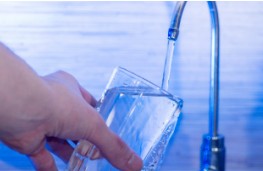If you are concerned about the quality of your tap water and wish to enjoy a refreshing glass of water without the taste and smell of chlorine or chloramine, you’ve come to the right place. In this comprehensive guide, we will delve into the various methods and techniques to remove chlorine and chloramine from water, ensuring a safe and pleasant drinking experience.

Chlorine and chloramine are commonly used to disinfect municipal water supplies, killing harmful bacteria and microorganisms. While this practice makes water safe to drink, it can also lead to an unpleasant taste and odor in your drinking water. Here are some effective ways to remove these chemicals:
Activated carbon filters are one of the most popular and effective methods to remove chlorine and chloramine from water. The porous surface of activated carbon attracts and traps these chemicals, providing cleaner and better-tasting water. These filters are available as pitcher filters, faucet attachments, and even whole-house filtration systems.
Reverse osmosis is a powerful water filtration technique that removes a wide range of impurities, including chlorine and chloramine. Water is forced through a semipermeable membrane, leaving contaminants behind. The result is pure, crisp water that is free from unwanted chemicals.
Vitamin C filters use ascorbic acid, which neutralizes chlorine and chloramine upon contact. These filters are environmentally friendly and easy to install, making them an excellent choice for those looking for a more natural water filtration method.
Aeration is a simple yet effective method to remove chlorine from water. By exposing water to air, chlorine naturally dissipates over time. This method is particularly useful for gardeners and aquarium owners who want to protect their plants and aquatic life from chlorine exposure.
Boiling water is an age-old method to disinfect water and remove chlorine. However, this method is not entirely effective against chloramine, which may remain in the water even after boiling. It is best suited for emergency situations or when dealing with low levels of chlorine.
Zeolite is a natural mineral that can selectively remove chlorine and chloramine from water. This filtration method is often used in combination with other filtration systems to enhance their efficiency.
Ultraviolet (UV) disinfection is a chemical-free method that uses UV light to kill bacteria and neutralize chlorine in water. While it does not remove chloramine, it is an excellent option for those seeking a chemical-free water treatment solution.
Distillation involves boiling water and collecting the condensed steam, leaving impurities behind. It effectively removes chlorine and chloramine from water, but it may not be practical for everyday use due to its slow process.
Catalytic carbon filters are designed to remove chloramine specifically. They use a special form of activated carbon that can break down chloramine molecules, providing superior water quality.
Ion exchange resin can effectively remove both chlorine and chloramine by exchanging chloride and ammonia ions with harmless bicarbonate ions. This method is commonly used in water softeners and certain water filtration systems.
Ensuring clean and chlorine-free water involves more than just choosing the right filtration method. Here are some expert tips to optimize your water quality:
Regardless of the filtration method you choose, make sure to follow the manufacturer’s guidelines and replace filters regularly. Overused filters lose their effectiveness and may even become breeding grounds for harmful bacteria.
Consider getting your water tested to identify the specific contaminants present. This will help you choose the most suitable filtration method for your needs.
Water softeners can help remove minerals that cause hardness in water, which may enhance the effectiveness of other filtration methods.
If you use filtered water for storage, ensure you use clean, airtight containers to prevent recontamination.
For comprehensive water treatment, consider investing in a whole-house filtration system that provides clean water for all your household needs.
Q: Can I use a water pitcher with activated carbon filters to remove chlorine and chloramine?
Yes, water pitchers with activated carbon filters are an excellent and convenient way to remove chlorine and chloramine from your drinking water. These filters are easy to use and can significantly improve the taste and odor of your tap water.
Q: Is boiling water enough to remove chloramine?
Boiling water is effective in removing chlorine, but it may not fully remove chloramine. To remove chloramine completely, consider using other filtration methods, such as activated carbon filters or catalytic carbon filters.
Q: Can I use a combination of filtration methods?
Yes, using a combination of filtration methods can enhance the overall effectiveness of removing chlorine and chloramine from water. For example, you can use an activated carbon filter in combination with a catalytic carbon filter to achieve superior water quality.
Q: How do I know which filtration method is best for my water?
To determine the most suitable filtration method, consider getting your water tested or consult with a water treatment specialist. They can provide valuable insights into your water quality and recommend the best filtration solution.
Q: Are chlorine and chloramine harmful to health?
In regulated amounts, chlorine and chloramine are generally safe to consume. However, their presence in water may result in an unpleasant taste and odor. Some individuals with specific health conditions may be more sensitive to these chemicals, and in such cases, filtration is recommended.
Q: Can I use boiling water to remove chlorine from my aquarium?
Boiling water is a useful method to remove chlorine from water used in aquariums. However, it is essential to let the water cool down to room temperature before adding it to the aquarium to avoid stressing the aquatic life.
Removing chlorine and chloramine from water is essential to ensure a refreshing and enjoyable drinking experience. From activated carbon filters to reverse osmosis systems, various methods can help you achieve cleaner and safer water. Remember to choose the filtration method that best suits your needs and lifestyle. By following the expert tips and frequently asked questions in this guide, you can confidently take control of your water quality and enjoy the benefits of cleaner, chlorine-free water.